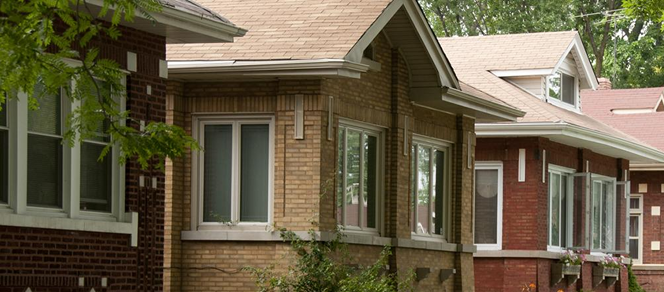Financing Single-Family Electrification and Clean Energy Projects – Executive Summary

While the Inflation Reduction Act (IRA) provides unprecedented incentives to fund and finance energy-saving retrofits to low-and moderate-income (LMI) housing, challenges remain in implementing and paying for these projects. Despite historic funding across the federal, state, and local incentive programs (especially for LMI projects), funding gaps remain, keeping these important clean energy and cost saving projects out of reach for many LMI households.
Technical complexities have also proven to be challenging, especially when combining technologies for decarbonization projects and measuring and ensuring savings for participants. An aspect of this technical complication is also inherent in the financial viability of projects. Combining various measures can have a direct impact on the financial viability of the project and whether there is a funding gap remaining after incentives. Combining these complex technologies also presents challenges with procurement, logistics, stacking incentives, and more – all these have been found to have an impact on the financial viability of projects.
This paper focuses on one segment of the LMI retrofit market and sets out to identify the potential funding gaps, and how these various elements of a retrofit can impact these funding gaps and overall financial viability. The aim is to identify how retrofits can be shaped and targeted to widen the universe of projects that 1) do not have funding gaps or 2) have funding gaps that can be financed in a way that provides reasonable terms and savings for LMI households. While not all projects may hit the mark, understanding how these elements fit together will help program administrators and lenders identify and serve wider segments of LMI households.
While this guide only analyzes single-family homes in Chicago and Minneapolis, it is believed that the approach and findings will provide learning that is relevant for other geographies and building types.
The IRA provides unprecedented funding for energy retrofits to the nation’s LMI housing stock, which is needed to advance clean energy, social equity, and climate justice goals, as well as to improve the health, safety, and comfort of LMI households. Even with this funding — which is subject to change based on the priorities of the incoming administration, the nation’s need for energy retrofit funding far outstrips available financial resources, and for many projects, funding gaps remain even after all IRA and other financial incentives are exhausted. Clearly, this depends on the many factors that comprise the energy retrofit, like the existing condition of the home, the retrofit measures included, state regulatory framework, the income and tax status of the property owner or occupants, or other important characteristics. For LMI projects where incentives cannot eliminate the gap in costs, providing financing with reasonable terms and allowing for reasonable customer energy savings will be critical for successful national implementation.
While this paper will be useful to many stakeholders, it targets several primary audiences.
- The first is IRA program implementers, i.e., the Greenhouse Gas Reduction Fund (GGRF), Home Efficiency Rebate (HER), and Home Electrification Appliance Rebate (HEAR) programs.
- The second audience is the lenders that work with and through these programs.
- Lastly, project developers who submit project proposals to these programs will benefit indirectly from this analysis.
As shown through a case study approach, program developers can better understand the financial viability and risk of residential energy retrofit projects with a clearer understanding of housing, energy, project, and financial characteristics and how those characteristics affect costs, savings, payback, and potential loan terms. The case study results show the potential for annual energy cost savings to be used to reasonably fund subsidized loans to homeowners, or, when combined with available incentives, to achieve 100% project financing. The paper discusses the trade-offs and implications of using energy cost savings to fund energy retrofit loans for LMI lenders to consider. The paper recommends that LMI lenders strongly consider using energy cost savings to underwrite retrofit loans, provided appropriate underwriting and structural safeguards are put in place.
The aim is to identify project scopes and loan terms that ensure energy cost savings with project payback periods that are less than the expected lifetime of the energy equipment being financed. While not every project with a funding gap after incentives are applied will meet these criteria or be a good candidate for financing, it is believed that by understanding how project characteristics impact financing viability, program administrators can design programs around more efficient project scopes and lenders can develop more targeted loan products, increasing the share of electrification and clean energy projects that can be appropriately financed. These developers and lenders can also better understand how requirements for savings and reasonable payback can impact their universe of projects being financed. By understanding how project characteristics impact financing viability, program administrators and lenders can develop more targeted loan products, increasing the share of electrification and clean energy projects that can be appropriately financed.
Project developers can use this knowledge to help scope projects in a way that ensures savings and reasonable payback. For example, they can be more confident in their understanding of how combining certain measures in different geographies impacts their ability to gain the best financial terms and best payback.
This report focuses on single-family homes in two cold-climate Midwest markets and looks at both full and partial-electrification project case studies. It is believed that the findings will help program administrators and lenders better shape project deployment and financing for a wide variety of projects, properties, and loan types across the country.
The full report can be viewed here.



